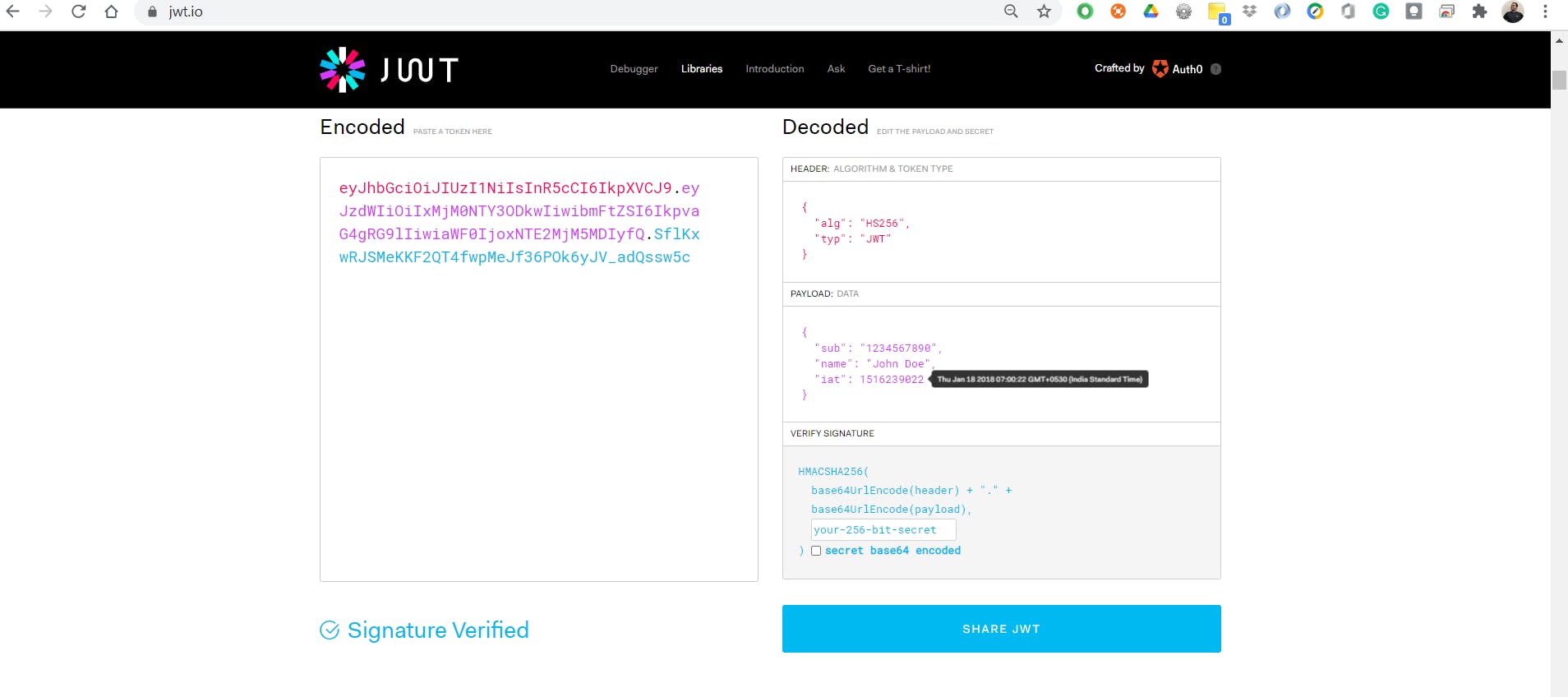JSON Web Token is a standard used to create access tokens for an application.
It works this way: the server generates a token that certifies the user identity, and sends it to the client.
The client will send the token back to the server for every subsequent request, so the server knows the request comes from a particular identity.
It is compact, readable and digitally signed using a private key/ or a public key pair by the Identity Provider(IdP). So the integrity and authenticity of the token can be verified by other parties involved.
The purpose of using JWT is not to hide data but to ensure the authenticity of the data. JWT is signed and encoded, not encrypted.
JWT is a token based stateless authentication mechanism. Since it is a client-side based stateless session, server doesn’t have to completely rely on a datastore(database) to save session information.
Structure of JWT
A JSON Web Token consists of 3 parts separated by a period.
- Header
- Payload
- Signature
Header
The header typically consists of two parts: the type of the token, which is JWT, and the signing algorithm being used, such as HMAC SHA256 or RSA.
For example:
"alg": "HS256",
"typ": "JWT"
}
Then, this JSON is Base64Url encoded to form the first part of the JWT.
Payload
The second part of the token is the payload, which contains the claims. Claims are statements about an entity (typically, the user) and additional data. There are three types of claims: registered, public, and private claims.
Issuer(iss) Subject (sub) Audience (aud) Expiration time (exp) Issued at (iat)
An example payload could be:
"sub": "1234567890",
"name": "John Doe",
"admin": true
}
Signature
To create the signature part you have to take the encoded header, the encoded payload, a secret, the algorithm specified in the header, and sign that.
For example if you want to use the HMAC SHA256 algorithm, the signature will be created in the following way:
base64UrlEncode(header) + "." +
base64UrlEncode(payload),
secret)
Putting all together
eyJhbGciOiJIUzI1NiIsInR5cCI6IkpXVCJ9.eyJzdWIiOiIxMjM0NTY3ODkwIiwibmFtZSI6IkpvaG4gRG9lIiwiaWF0IjoxNTE2MjM5MDIyfQ.SflKxwRJSMeKKF2QT4fwpMeJf36POk6yJV_adQssw5c


